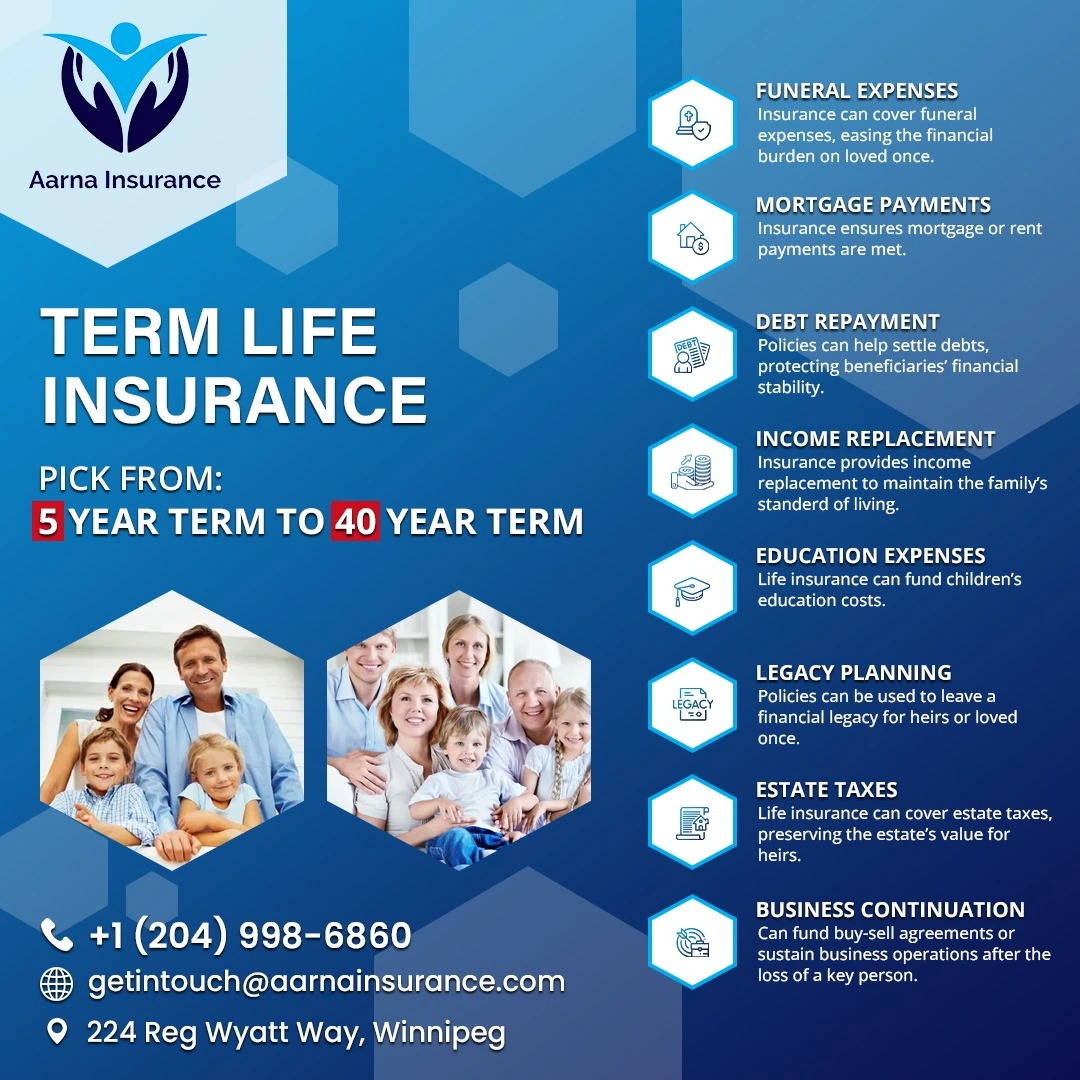
No Registration/Signup required. Our experts will reply you with a quote very soon

Amongst all life Insurance products, Term life insurance is the simplest and purest form of insurance. It is a reasonably priced means of guaranteeing financial stability for your loved ones, if the unexpected happens. Term life insurance gives you the peace of mind that your family will not be burdened with debt or lost income, whether you plan to start a family, purchasing your first house, or preparing for retirement.
Common terms or for simplicity, we can call periods include 10, 20, 30 or 40 years. Some insurance companies also offer even more flexible options where you can pick your own term, like pick-a-term policy offered by Industrial Alliance.
At Aarna Insurance, Our advisors can help you conduct a thorough need analysis and help you find the right product.
When it’s time to choose and decide which is the right type of term life insurance (a question that boggles many….), keep in mind it depends on your financial goals, lifestyle, and the obligations you want to protect and this generally differs from one person to another.
For more in-depth knowledge, some specific scenarios and FAQs about Term Life Insurance in Canada, please refer to our Blogs
In Canada, many insurers offer both medically underwritten and no-medical-exam options.